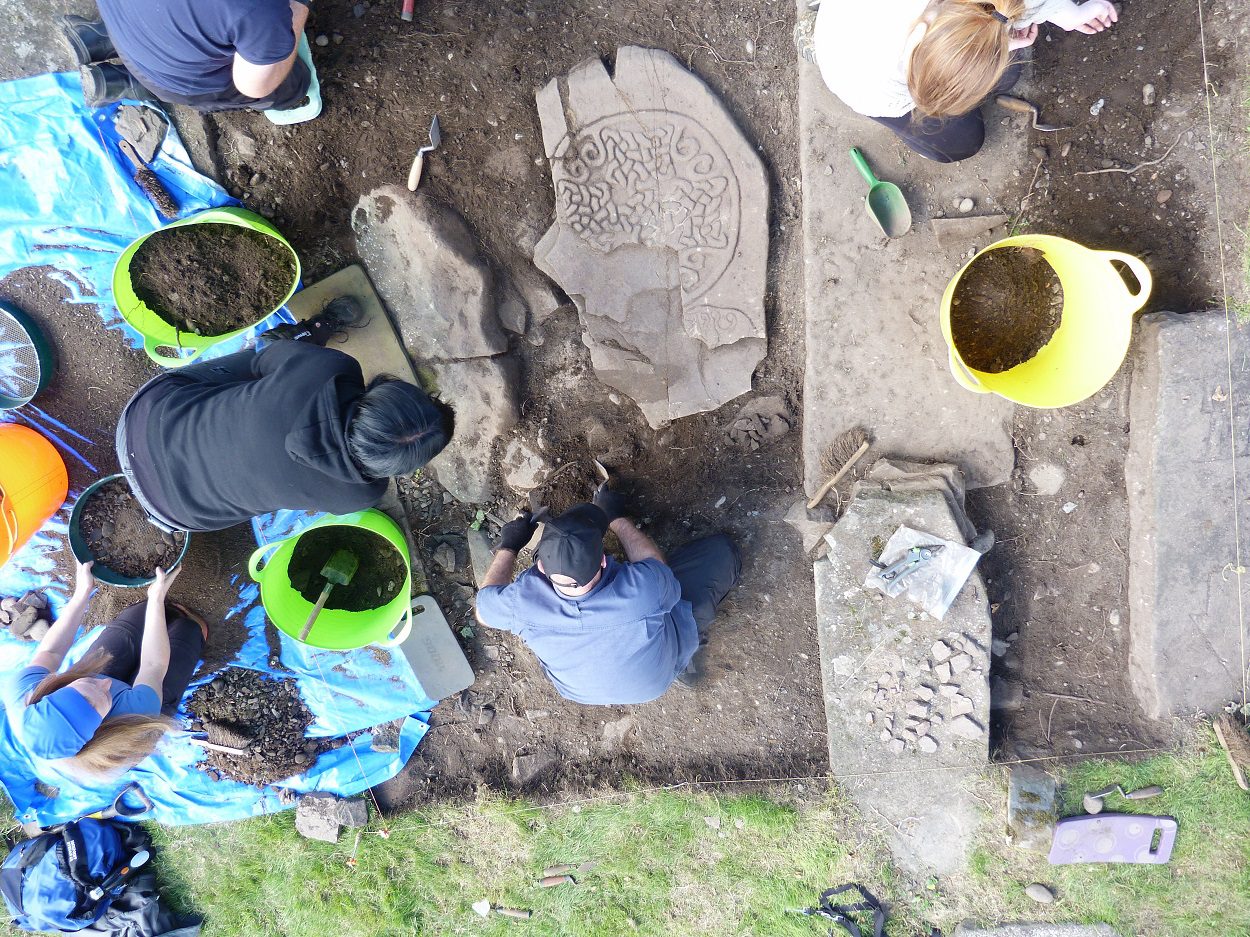Archaeologists have uncovered a Pictish stone with 1,500-year-old inscriptions near Doune in Scotland.
The Picts were a group of people who inhabited the areas of Northern and Eastern Scotland (north of the Firth of Forth) during Late Antiquity and the Early Middle Ages.
Picts are assumed to have been the descendants of the Caledonii and other Iron Age tribes, mentioned by Roman historians or on the world map of Ptolemy. The Picts, or “Painted People,” were so-named around the 3rd century AD as a generalised exonym used by the Romans to describe those Britons north of the Forth–Clyde isthmus.
Roman historians described their war paint and tattoos, with the Latin word “picti” meaning “paint”. The name continued to be used by outsiders, notably the Irish Annalists and scholars such as Bede from the Kingdom of Northumbria of the Angles during the Middle Ages.
A team of archaeologists and volunteers discovered a cross slab stone in the Old Kilmadock cemetery near Doune, a burgh within Perthshire. The stone has a mysterious inscription written in a medieval alphabet called ogham, and animal figural decorations depicting carved birds that dates to between AD 500 to 700.
The stone likely survived as it was reused in much later times as a grave covering in the cemetery, giving the researchers new insights into the ogham language which were generally inscribed on stones to spell out the names of wealthy or powerful people. Around 400 ogham inscriptions have been identified, mostly in Ireland, but the new discovery at Old Kilmadock is the first example to be found in central Scotland with this mysterious alphabet.
Speaking to Live Science, Stirling Council archaeologist Murray Cook suggests that the stone was “”a public statue erected by a wealthy patron to celebrate both their Pictish heritage and their Christian faith. The ogham reflects the influence of Irish Christians.”
This interpretation is supported by three additional stones found previously in the cemetery that have two different alphabets. “I think this means they were a literate and an intelligent religious community,” Cook said; there was “probably a monastery.”
Header Image Credit : Murray Cook
